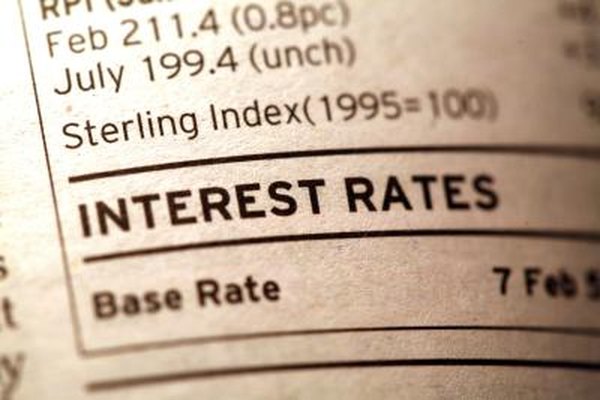What Is Roll-Down Return?
The function of bond prices allows you to profit from changing interest rates.
Jupiterimages/Photos.com/Getty Images
When you think about bond investments, the first return that probably comes to mind is the yield you would earn from a bond. Then, if you understand how bonds work, you know that bond prices rise if interest rates fall. Roll-down return is a third way to increase the total return from bonds, and this form of profit depends on the shape of the yield curve.
Yields and Terms
When bond yields conform with what would be called a normal yield curve, the rate you earn on longer-term bonds will be higher than the yield from short-term bonds. In essence, you get paid more for tying your money up for a longer period of time. Graphing the yield for different maturities, from one month out to 30 years, produces the yield curve. An investor will buy bonds at different points along the curve depending on how long she is willing to lock up her money and her expectations concerning interest rates.
Lower Yields, Higher Prices
Once a bond has been sold by the original issuer, the interest rate -- called the coupon rate -- it pays is fixed. The bond market adjusts for changing interest rates by raising or lowering the market price of a bond. Prices and yields have an inverse effect; lower rates produce higher bond prices, and rising rates cause bond prices to fall.
Rolling Down The Curve
If you buy a longer-term bond and the yield curve has a normal slope, the market price of a bond naturally increases as the bond rolls down the yield curve. For example, say you buy a five-year bond, paying a 5 percent coupon with a 5 percent yield -- the bond is priced at face value. After two years, you own a three-year bond. If rates have not changed, the market yield on the now three-year bond should be lower, because it is a shorter-term bond. However, your bond pays a 5 percent interest rate, so the bond's market value must be higher. An investor buying the bond to now earn the 4 percent yield that three-year bonds are paying would pay 103.5 percent of the bond's face value. Your bond has gained value as it rolled down the yield curve.
Investing for Roll-Down
To enhance your bond investment returns with roll-down, you would study bond yields and prices and look for the steepest range on the yield curve -- the area where yields change the most over the shortest period of time. Then you buy the longer-term bonds and sell when the bond price is maximized due to the roll-down. Take the earlier example. You paid $1,000 for a 5 percent, five-year bond and sold after two years, receiving about $1,035 for your bond. That gave you a total return of 13.5 percent for the period you owned the bond -- your 5 percent yield each year plus the 3.5 percent premium you got for selling.
References
Writer Bio
Tim Plaehn has been writing financial, investment and trading articles and blogs since 2007. His work has appeared online at Seeking Alpha, Marketwatch.com and various other websites. Plaehn has a bachelor's degree in mathematics from the U.S. Air Force Academy.

